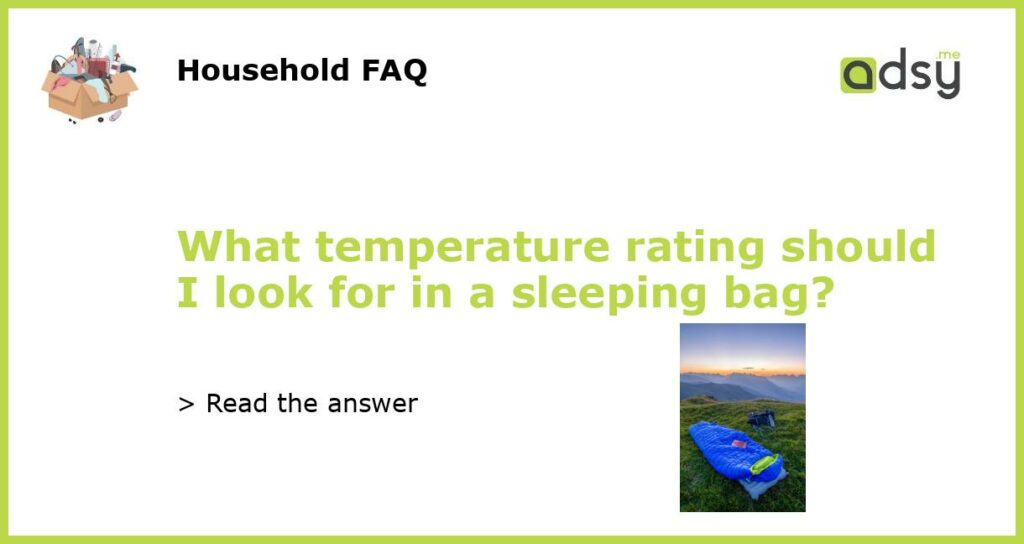Understanding Sleeping Bag Temperature Ratings
If you are planning to go camping or trekking, one essential item that you will need is a sleeping bag. A good sleeping bag can keep you warm and comfortable, ensuring a good night’s sleep in the great outdoors. One important factor to consider when choosing a sleeping bag is its temperature rating. In this article, we will explore what temperature rating you should look for in a sleeping bag.
The Basics of Temperature Ratings
Sleeping bags come with temperature ratings that indicate the lowest temperature at which the bag can keep you warm. These ratings are determined through standardized tests in controlled environments. However, it is important to note that individual comfort levels may vary based on factors such as metabolism, clothing, and sleeping pad usage.
The most common temperature ratings are:
- Comfort Rating: This is the lowest temperature at which the average person can sleep comfortably in the bag. It is suitable for individuals who are cold sleepers or do not tolerate cold temperatures well.
- Transition Rating: This is the lowest temperature at which the average person can sleep without feeling excessively cold. It is suitable for individuals who are average sleepers or do not get too cold easily.
- Extreme Rating: This is the lowest temperature at which the average person can survive in the bag without risk of hypothermia or frostbite. It is not recommended to sleep in temperatures approaching this rating unless it is an emergency situation.
Consider Your Camping Conditions
When selecting a sleeping bag, it is important to consider the anticipated camping conditions. If you are camping in warmer climates, a higher temperature rating may be more suitable, as you will not require as much insulation. On the other hand, if you are camping in colder temperatures or higher altitudes, a lower temperature rating is recommended to ensure adequate warmth.
It is also important to consider the season in which you will be camping. Many sleeping bags are categorized by season, such as summer, three-season, or winter bags. Summer bags are designed for warmer temperatures and have higher temperature ratings, while three-season and winter bags are suitable for cooler temperatures and have lower temperature ratings.
Personal Preference and Comfort
In addition to considering the camping conditions, it is also important to take into account your personal preferences and comfort levels. Some individuals may naturally feel colder or warmer than others, and factors such as metabolism, clothing, and sleeping pad usage can also affect your comfort in a sleeping bag.
If you tend to feel colder or sleep cold, it is recommended to opt for a sleeping bag with a lower temperature rating to ensure warmth. Likewise, if you tend to feel warmer or sleep warm, a higher temperature rating may be more suitable.
Additional Tips for Choosing a Sleeping Bag
When choosing a sleeping bag, here are a few additional tips to keep in mind:
- Consider the fill type: Sleeping bags can be filled with down or synthetic materials. Down offers excellent insulation and compressibility but is not suitable for wet conditions. Synthetic fill is more water-resistant and retains insulation when wet, making it a good choice for camping in damp environments.
- Check the weight and packability: If you will be backpacking or trekking, the weight and packability of the sleeping bag are important factors to consider. Lighter and more compressible sleeping bags are easier to carry and take up less space in your backpack.
- Check the sleeping bag’s dimensions: Ensure that the sleeping bag provides enough room for you to move comfortably. Some individuals may prefer a snug fit for better insulation, while others may prefer a bag with more room to move around.
By considering the temperature rating, camping conditions, personal preferences, and additional features, you can choose a sleeping bag that will keep you warm and comfortable during your outdoor adventures.






